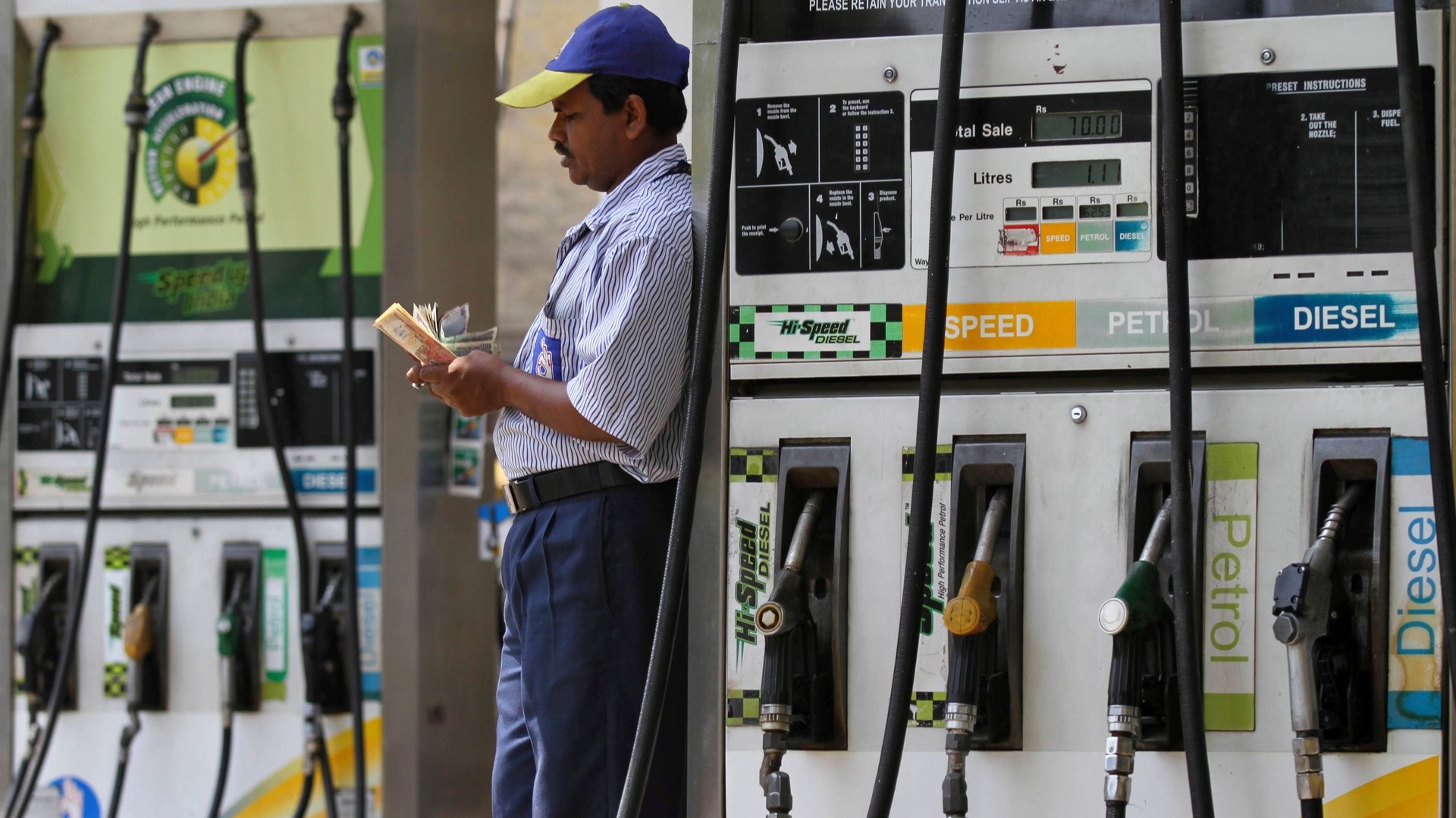Amidst its renewables push, India’s doubling down on fossil fuels
Despite the buzz around renewable energy in India, fossil fuels are not dying out anytime soon.


Despite the buzz around renewable energy in India, fossil fuels are not dying out anytime soon.
Over the next three years, the country’s three state-owned oil marketing companies (OMCs) plan to nearly double the number of fuel pumps they operate collectively. On Nov. 25, Indian Oil Corporation (IOC), Bharat Petroleum Corporation (BPCL), and Hindustan Petroleum Corporation (HPCL) sought bids from private dealers to expand their retail network.
The three companies currently operate 90% of all fuel-filling stations in India. Nayara Energy, Reliance Industries, and Royal Dutch Shell are the smaller private players in the sector.
The plan to ramp up the distribution network follows “a signal from the oil ministry to public sector fuel retailers,” the Economic Times newspaper reported. The move could entail investments of thousands of crores in the fuel retailing business and create numerous jobs, and is therefore well-timed for prime minister Narendra Modi’s government, which is gearing up for the 2019 general elections.
Even though only a third of the bids generally end in success, the move reflects the OMCs’ resilience against electric vehicles. “For a fast-growing economy like ours, energy needs are growing manifold. OMCs are undertaking retail outlet network expansion in tandem with the growth in demand of petrol and diesel,” said a joint statement from the three corporations.
The Paris-based International Energy Agency’s outlook for 2040 estimates that, as compared to 2017, cars in developing economies such as India will consume an extra 5.4 million barrels of oil per day.
Last week, Modi announced his vision for “a gas-based economy,” with a target of raising the number of filling stations for compressed natural gas (CNG) to 10,000 in the next 10 years. The country had 947 CNG stations in 2014, which now stands at over 1,470 stations.
On Nov. 24, The New York Times reported that the country is also building 50 gigawatts of additional coal capacity. The fossil fuel accounts for 60% of India’s power capacity.
As India’s energy consumption soars, growth of non-renewable energy resources has been seen as inevitable. But solar capacity additions—at the heart of India’s clean energy plans—have slowed down recently.
According to oil giant BP’s energy outlook, fossil fuels will meet 82% of India’s energy demand in 2040, down from 93% in 2016.
But despite its embrace of fossil fuels, India is holding its end of the bargain. The country is so far on track to meet its voluntary carbon emissions reductions target, in line with capping the global temperature rise at 2°C, by generating 40% of its power from non-fossil-based sources by 2030.